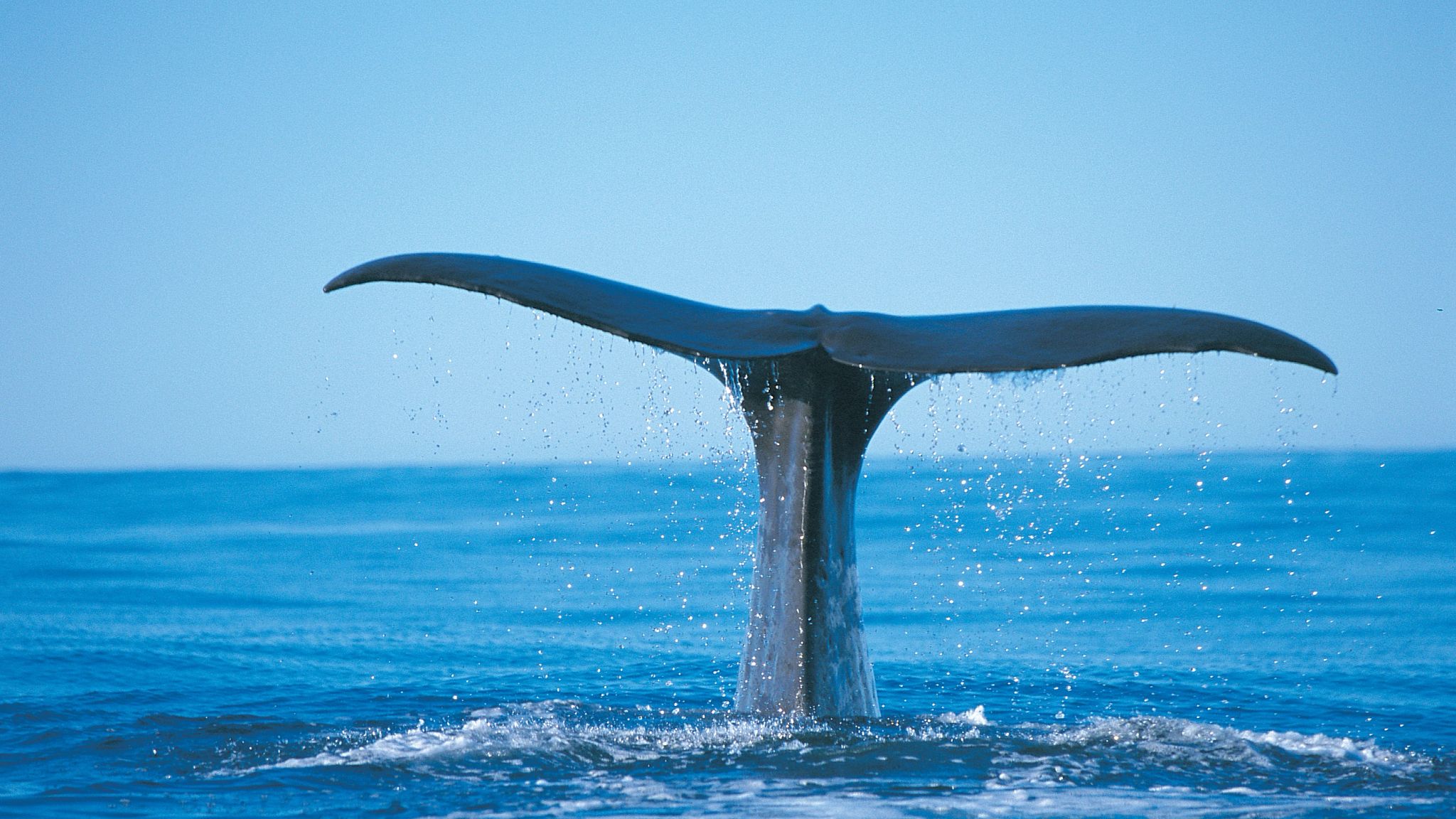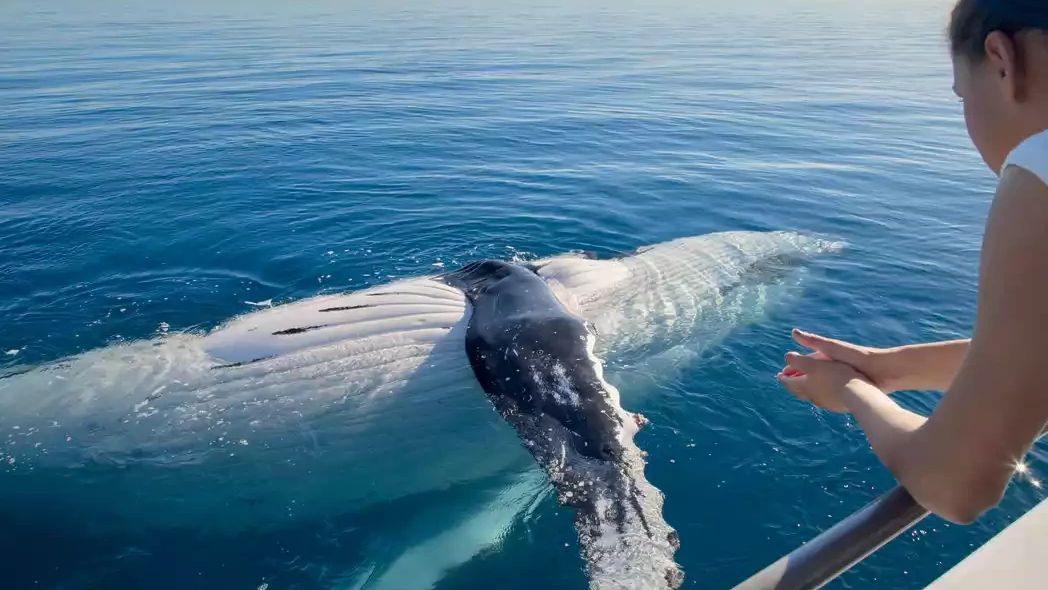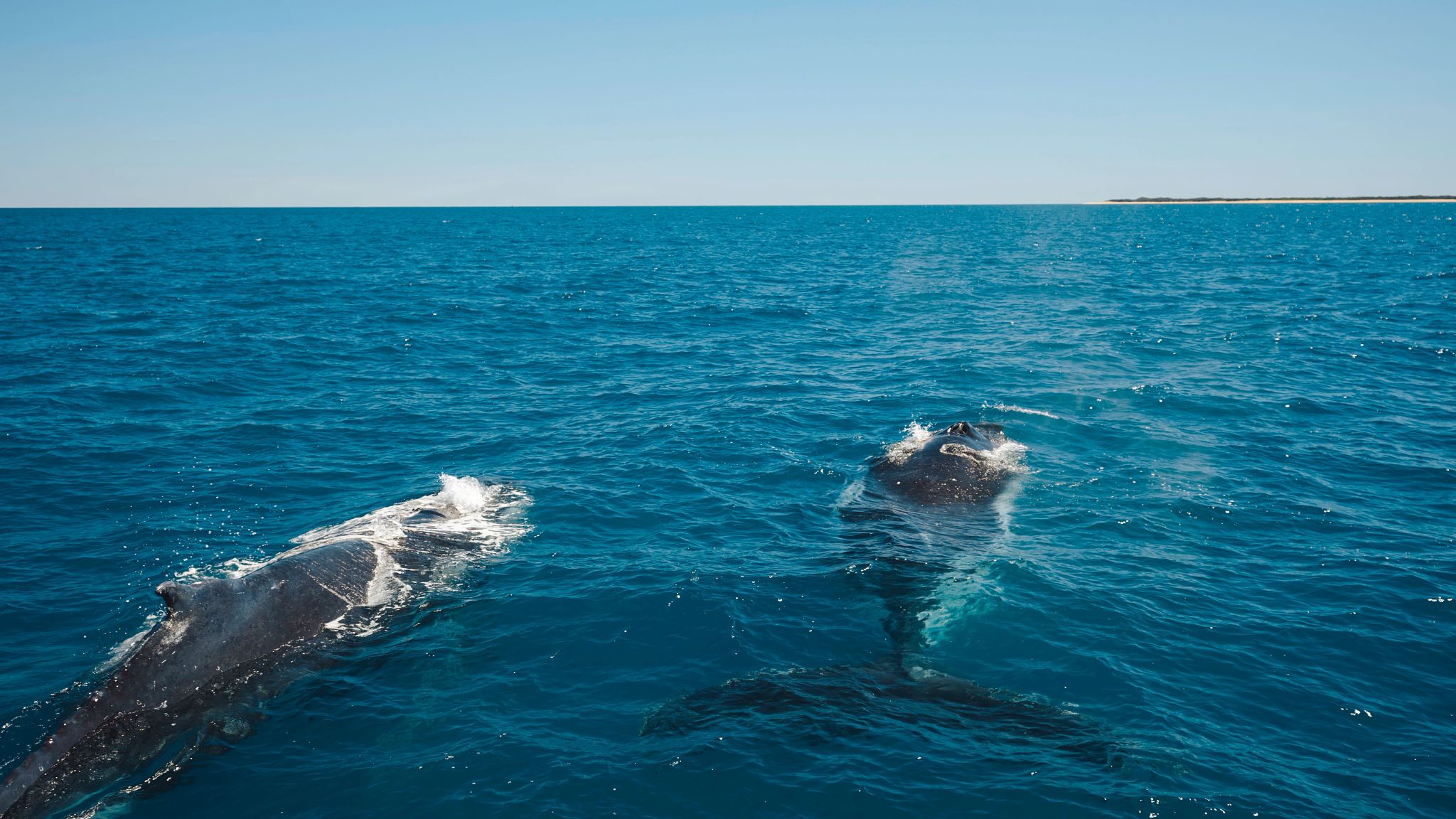Where to See Blue Whales in Australia
Welcome to our ultimate guide on spotting the majestic blue whales along the expansive Australian coastline. Whether you're gearing up for a family adventure in a campervan hire or planning a dedicated whale-watching Australia trip, you've come to the right place.
This blog will explore the best places and times to see blue whales. We have also thrown in a few top tips for whale watching as a family and additional wildlife encounters and activities to enrich your Australia road trip. But first...
What are blue whales (and how are they different from southern right whales, humpback whales, sperm whales and killer whales)?
Blue whales are the giants of the ocean (the Antarctica blue whale is known for being the largest animal on earth!). These marine behemoths can grow up to 100 feet in length and weigh upwards of 200 tons—the equivalent of about 33 elephants.
Blue whales primarily differ from other whale species in their immense size, diet, and behaviour. Unlike humpback whales, which are known for their acrobatic breaching and complex songs, blue whales are generally more solitary and less vocal.
Sperm whales, on the other hand, are notable for their large heads and deep ocean diving abilities to hunt squid, which contrasts with the blue whale's krill-based diet, which is consumed through filter feeding.
And then there are the southern right whales. These are typically smaller in size and tend to stay closer to shorelines, making them more accessible for watchers from land in the Southern Hemisphere oceans.
Last but not least, killer whales (or orcas), despite their name, are actually dolphins and are much smaller; they are apex predators with a varied diet that includes fish, seals, and even other whales, setting them apart from the generally gentle giant, the blue whale.
While blue whales can be elusive due to their deep-water preferences, Australian waters offer some of the best chances to see these magnificent creatures, especially when you join a whale-watching tour to catch these marine giants on their migration routes.
How to best see blue whales
When it comes to exploring the vast and scenic coastlines where blue whales roam, nothing beats the freedom and flexibility provided by an Apollo campervan. Renting a motorhome allows you to follow the migration patterns of whales at your own pace, from the East Coast to the South Coast and beyond, stopping off at scenic lookouts and joining whale-watching tours along the way.
Travelling in a camper is ideal for families or groups who value both comfort and adventure. With a mobile base of operations, you can stay near prime whale-watching spots without worrying about finding accommodations or dining out every night. Plus, the mobility ensures that if one location doesn’t yield sightings, you can easily drive to the next. Or, better yet, enjoy multiple sightings!
 Image: Tourism and Events Queensland
Image: Tourism and Events Queensland
Best locations for blue whale watching in Australia
Ready to dive into some of the most spectacular spots for blue whale watching in Australia? Well, it’s time to dive deep.
1. Great Australian Bight, South Australia
The Great Australian Bight is renowned for its rugged cliffs and deep waters, making it one of the best places to observe blue whales in their natural setting. This remote coastline offers a breathtaking backdrop for spotting not only blue whales but also southern right whales and humpbacks during their migration seasons. The optimal time to visit is from June to October, when the whales come closer to the coast to feed on the abundant krill.
Where to stay: For those travelling by campervan, sites like Nullarbor Roadhouse offer not only spectacular views but also the amenities needed for a comfortable stay.
2. Ningaloo Reef, Western Australia
Ningaloo Reef, a World Heritage site, is another gem for whale watchers heading out on a coral coast road trip. This Western Australia reef is bustling with life and is one of the best places where you can witness blue whales as part of their annual whale migration from March to July.
Plus, the clear blue waters of the beautiful Ningaloo Reef provide excellent visibility, enhancing your chances of spotting these magnificent creatures (not to mention all the other cetacean species).
Where to stay: Plenty of campervan-friendly locations are nearby, such as Ningaloo Lighthouse Holiday Park, which gives you easy access to the reef.
Other places in Australia to go whale watching
While the Great Australian Bight and Ningaloo Reef are prime destinations for observing blue whales, Australia boasts several other locales renowned for their whale-watching opportunities.
Hervey Bay, Queensland
Often hailed as the whale-watching capital of Australia, Hervey Bay offers a sheltered haven where humpback whales frequently stop to rest and play. This calm bay is ideal for mother whales to nurture their calves, leading to consistent and close-up sightings from mid-July to October.
 Image: Tourism and Events Queensland
Image: Tourism and Events Queensland
Sydney, New South Wales
Sydney's dynamic coastlines serve as a stage for one of nature's most spectacular whale migrations. From May to November, the city's shores are excellent for spotting humpback whales as they make their annual journey along the coast.
Iconic spots like Sydney Heads offer land-based vantage points, or you can opt for a more intimate encounter by joining a whale-watching cruise departing directly from Sydney Harbour. The accessibility of Sydney's whale-watching experiences makes it perfect for those travelling by camper.
Victor Harbor, South Australia
Just an hour's drive from Adelaide, Victor Harbor is a scenic gem with a reputation for fantastic whale-watching opportunities, particularly from June to September. The rugged coastline is a regular haunt for southern right whales, which can often be seen frolicking close to the shore.
The combination of accessible whale watching and charming coastal towns makes this area an excellent stop on any southern Australia itinerary.
Eden, New South Wales
Situated on the stunning Sapphire Coast in New South Wales, Eden is another prime location for whale watching, especially during the spring months. This area is particularly known for its sightings of both humpback whales and our non-whale friends, orcas, making it a unique spot for marine wildlife enthusiasts.
When to go whale watching
Timing is crucial for a successful blue whale-watching experience in Australia. Blue whales are migratory creatures that follow specific patterns that vary slightly from one region to another. To maximize your chances of spotting blue whales in Australia, it's essential to plan your visit during the right months and choose the best locations known for frequent sightings.
Planning your campervan hire around these times not only maximizes your chances of a blue whale sighting but also ensures you experience the region at its most lively. Plus, if the whales are late or the weather changes, you have the mobility to adjust your plans without the hassle of rearranging accommodations.
Tips for whale watching
Okay. So you have your camper, the location and the time of year: tick, tick, tick, Now, here are some bonus tips to ensure you have a rewarding experience:
-
What to bring to whale watching: Essentials include binoculars for distant viewing, a camera with a good zoom lens, and appropriate clothing, as it can get chilly at sea—even in Australian summers. Oh, and sea sickness tablets on hand, just in case!
-
Safety and environment with Australian wildlife: Always follow the guidelines provided by tour operators who ensure both your safety and the welfare of the whales. This includes keeping a respectful distance to minimize stress on the animals. If you are heading out on self-guided boat day tours, be sure to read up on the Australian government rules for whale watching. This ensures that everyone stays safe while admiring these graceful creatures.
-
Prepare your campervan for a whale-watching tour: Ensure your motorhome is stocked with all the essentials the night before your day out at sea. We recommend preparing an easy breakfast and dinner option for a seamless transition to and from the day tour. Also, be sure to check weather forecasts regularly and have a flexible travel itinerary to accommodate longer stays if whale activity is particularly high or low on certain days.
 Image: Tourism and Events Queensland
Image: Tourism and Events Queensland
Additional activities for spotting marine life and other Australian wildlife
While the main draw is undoubtedly the whales, the regions famous for whale watching also offer plenty of other wildlife activities:
-
Explore nature: Many whale-watching spots are nestled in areas of outstanding natural beauty. Hiking, snorkelling, and bird-watching are just a few activities that can complement your whale-watching adventure. Looking for more ideas? Check out our full guide to the best Australian travel destinations for nature lovers.
Ready to see some blue whales with a campervan hire?
Now that you're equipped with all the information on where and when to find blue whales in Australia, all that’s left is to book your adventure. You can book your Apollo camper online and pick it up from any Apollo branch before you start your journey. Whether you're a seasoned whale watcher planning an Aussie road trip or looking to take the family out for their first tour, whale watching in Australia is bound to be an unforgettable experience!